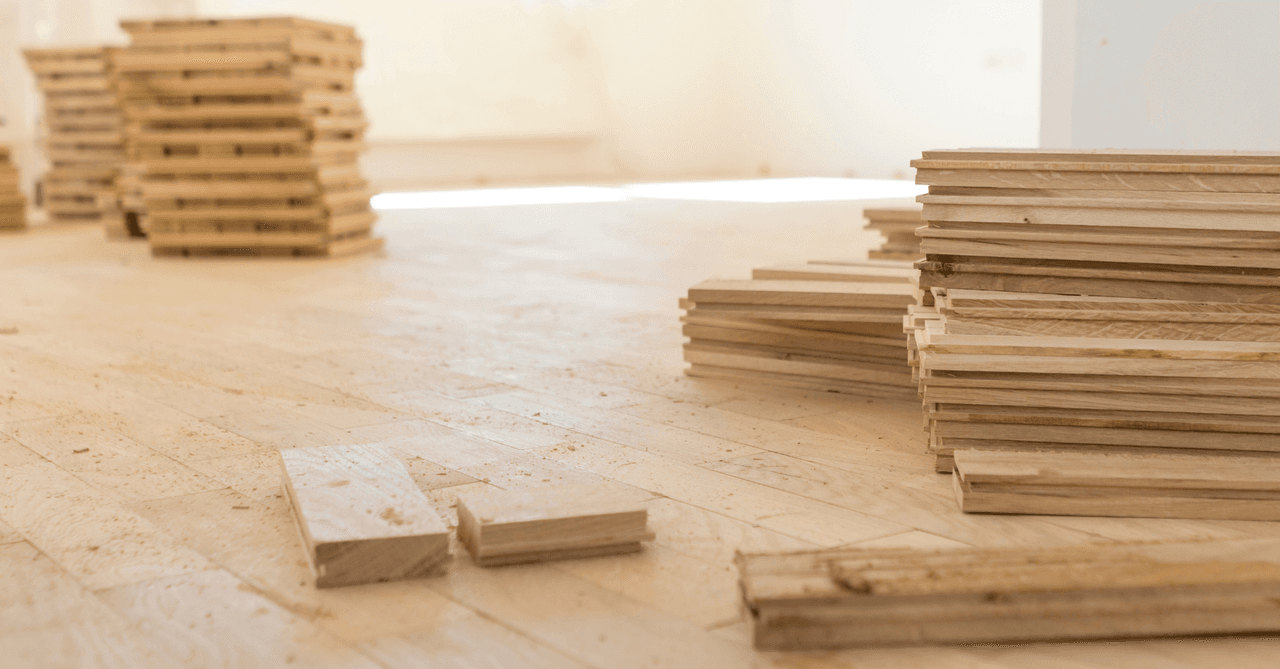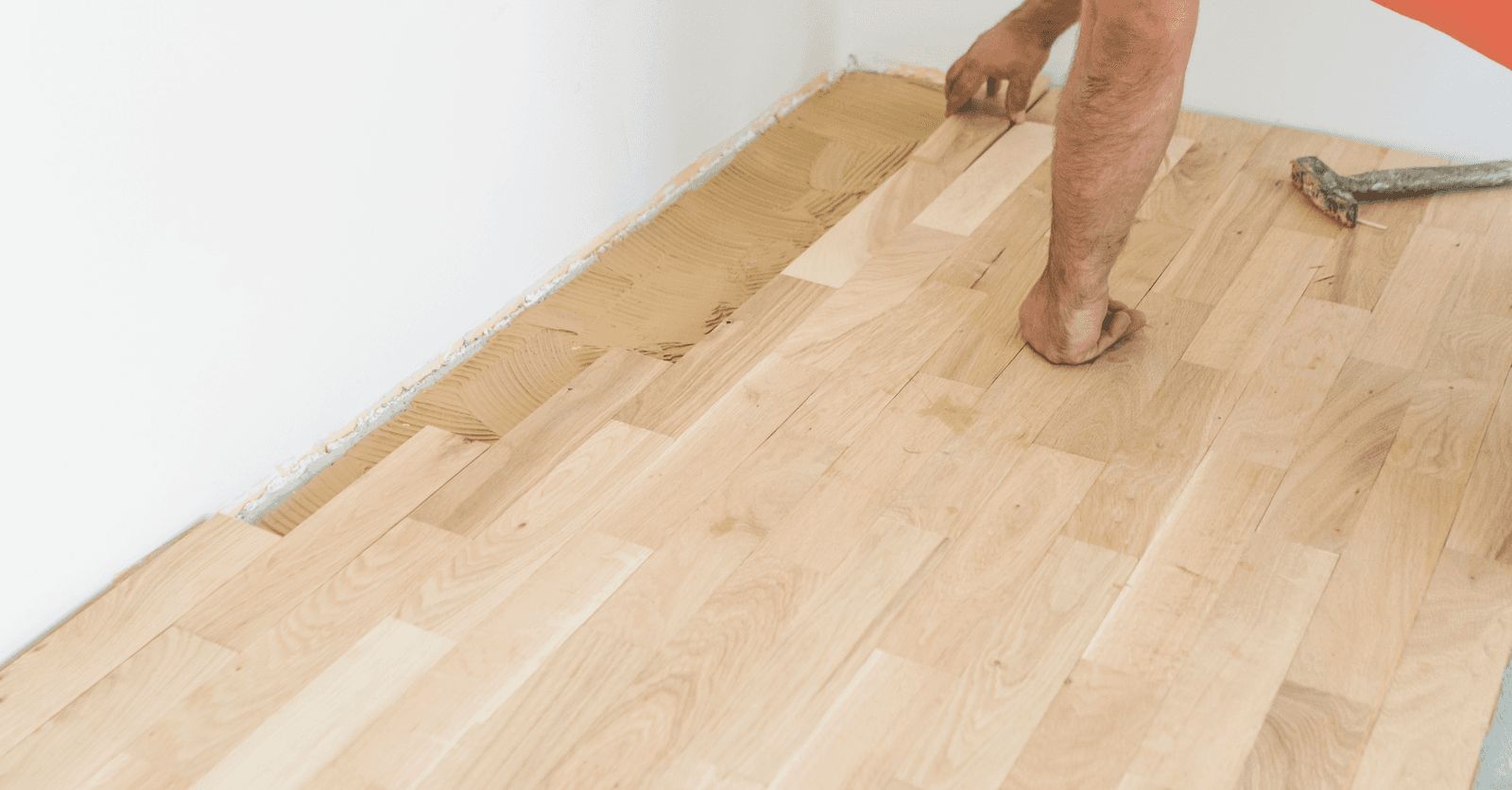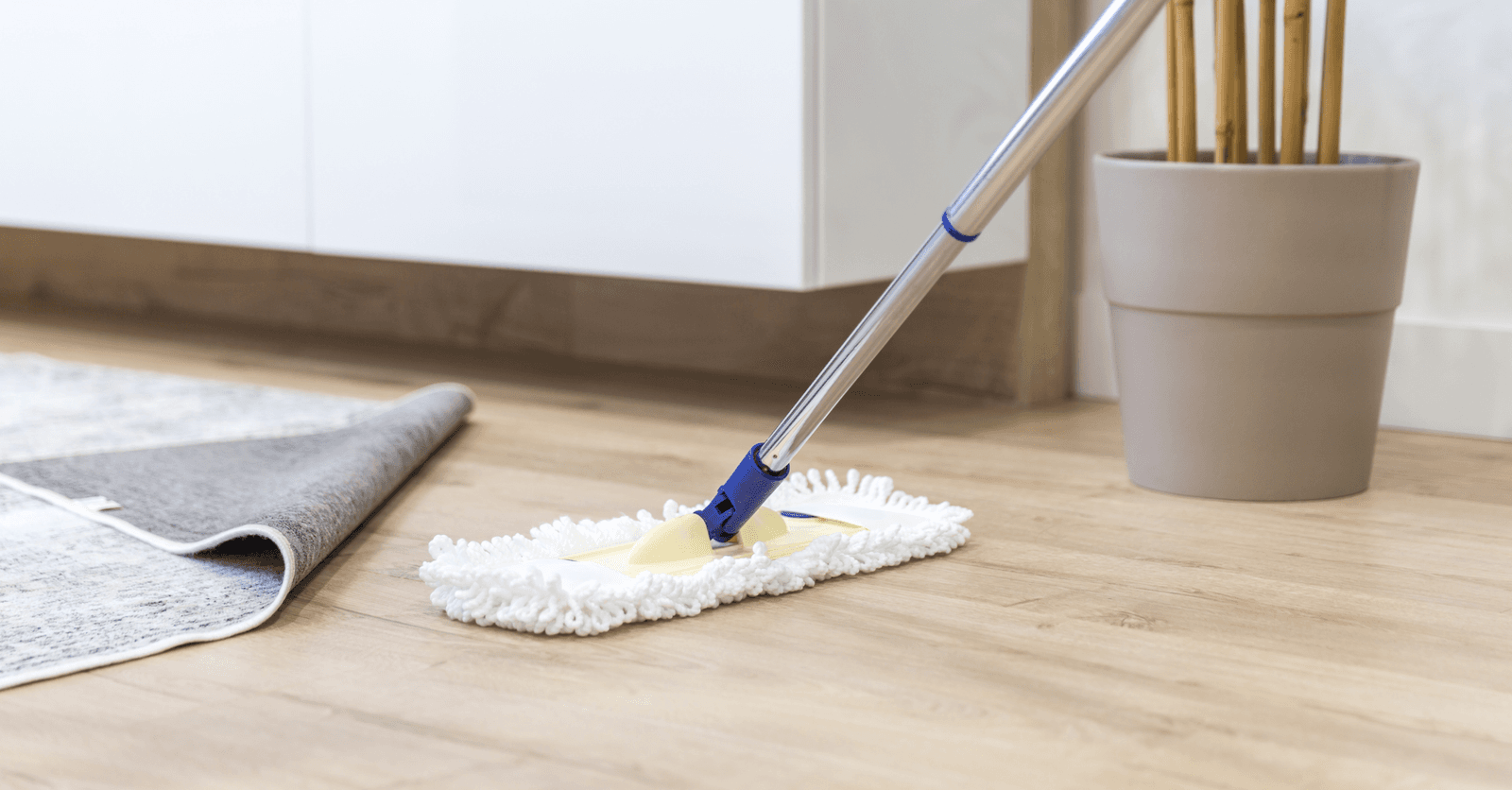Experience Cutting-Edge Technology with Engineered Wood Flooring
By Editorial Team
Updated on September 17, 2024

Engineered wood floors are most certainly the type of flooring you need. To ensure you’re choosing the best type of flooring for your interior living spaces, here are flooring-specific must-haves to stand the test of time, as well as installation tips.
What’s engineered wood flooring?

Source: Canva
It’s a type of flooring that consists of a core layer glued onto a piece of hardwood. Typically, the core layer is made of:
Russian birch plywood
high-density fibreboards (HDF)
oriented strand boards (OSB)
When made, the plywood that makes up part of the engineered wood flooring is either sawn, sliced, or peeled. When sawn, only high-value wood species can be used, creating a 0.2-inch (5 mm) thick layer.
However, sawn plywood is rarely used nowadays given that it requires a significant amount of raw materials and manufacturing delays.
Sliced plywood will typically consist of a veneer made from broad-leaf trees. Generally speaking, it won’t exceed 0.12 inches (3.5 mm) in thickness.
Last but not least, peeled plywood, which is much faster to produce than the other two. All types of wood species can be used. Therefore, it can either be uniform, if solely one species is used, or blended, if multiple species are mixed together. It’s 0.04-inch thick at most (1.2 to 1.9 mm).
Then, real wood is glued to the plywood; the glue used can be:
PVA type I wood glue
Epoxy
PVA
Hot melt glue
A study carried out at Université Laval determined that for longer-lasting results, engineered wood flooring must have the following characteristics:
a Russian birch plywood core
be sliced or peeled
not glued with epoxy (subpar bonding and delamination)
What’s the difference between an engineered wood floor and a hardwood floor?
The primary difference lies in quality and thickness. By thickness, we aren’t referring to the board as a whole, which can measure up to ¾ inches (1.9 cm). What we’re looking at is how thick the wear layer is.
A difference in thickness
Hardwood floors are designed with a single board made from a single wood species. Therefore, its wear layer is thicker compared to laminate (floating) flooring. It can thus be renovated more often and last longer.
On the other hand, laminate flooring is plywood. Meaning, a succession of wood layers glued atop one another, with a top coat finish. The wear layer isn’t as thick. Therefore, laminate flooring can’t be renovated as often as hardwood floors.
A difference in quality
Given the discrepancy in characteristics, both products aren’t installed in the same areas. Hardwood flooring doesn’t react well when exposed to humidity. Therefore, avoid installing it in the following areas:
basement
bathroom or wet room
kitchen
On the flip side, engineered wood floors can be installed any and everywhere, and aren’t limited to floors. It can be layered on walls, ceilings, concrete slabs, or be laid over a radiant floor system.
What’s the difference between laminate and hardwood flooring?
Laminate floors are often mistaken for hardwood. In reality, these two types of flooring couldn’t be any more different. Hardwood floors are a type of flooring, while laminate flooring refers to an installation method. There are:
hardwood floors
engineered wood floors
laminate (floating) floors
Hardwood floors, just like any other type of flooring, can be installed using the “floating” method, meaning secured without the use of glue or screws.
What are the benefits of choosing engineered wood?
Humidity resistant
Low maintenance
Its many layers prevent buckling
Heat resistant (heating system)
Can be laid on concrete
9 Engineered Wood Flooring Installation Tips

Source: Canva
Tip 1: Finish other endeavours first
Prior to installing engineered wood floors, make sure the following work is completely finished:
water supply system
floor heating system
concrete and plaster (60- to 90-day curing period)
etc.
Tip 2: Install dry floorboards
The temperature and humidity levels in the room in which the engineered wood flooring will be installed are very important. They must be between the following:
15-20°C (59-68°F)
40-60% humidity
Tip 3: Store the floorboards prior to installing them
To make sure the flooring is accustomed to the room’s temperature, store the flooring inside the room anywhere between 48 to 72 hours before proceeding with the installation.
Tip 4: Have the right tools handy
Jigsaw and mitre saw
Wood chisel
Measuring tape
Carpenter’s square
Level
Pencil/chalk
Line
Claw hammer and rubber mallet
Vacuum
Tip 5: Check the subfloor
The layer onto which the engineered wood flooring will be installed has to be flat and stable. Meaning, height- and depth-wise, it must not exceed the following:
0.19 inch (5 mm) over a 6.6 feet (2 m) length,
0.07 inch (2 mm) over a 7.87 inch (20 cm) length.
Otherwise, the floor will have to be re-levelled using self-levelling cement.
Tip 6: Install the first row
The first row will set the tone for the rest. Make sure it’s straight as every other row will match it. Maintain a ¼ inch gap between the wall and the tip of the floorboards, as well as half an inch between the wall and floorboard, length-wise.
Tip 7: Add adhesive
Using a trowel, apply glue to the backside of the floorboard while maintaining a 45° angle. Doing so will allow you to evenly spread the glue.
Tip 8: Install floorboards
Installing the planks using hammers as well as your body weight can render this task easier. In fact, it’ll ensure the boards are firmly pushed down against the glue and subfloor.
Tip 9: Cure time
The drying time normally takes 24 hours—based on the humidity levels and temperature. However, as you’re working, make sure to remove any glue residue on the planks. Once the glue has cured, it’ll be much harder to remove.
Engineered Wood Flooring Maintenance

Source: Canva
When it comes to the benefits of engineered wood flooring, its low-maintenance factor definitely comes to mind. Here’s everything you can do to keep it looking like new.
How can it be cleaned?
Regularly sweep or vacuum your floors to prevent anything abrasive from idling on its surface.
For a deep clean, use a microfibre mop pad soaked in a cleaning agent. Wipe the floor with the wood grain.
Repeat the process using a mop once a month.
How can it be repaired?
It all depends on the depth of the physical impact, or just how worn the flooring is. For scratches, the best repair method is using a pen, or marker, with an ink colour that closely resembles that of the floorboards. The purpose here is to dab pen or marker ink over the scratches.
If the scratches are quite deep, there are waxes that closely resemble floorboard shades. Such a wax can be applied directly to the affected area using a putty knife. Fill in the scratches with the wax.
There will be a time when these methods will prove futile, especially when it comes to the flooring’s natural wear over time. Note that engineered wood flooring can be professionally sanded two or three times.
Engineered Wood Flooring: A Perfect Blend of Technology and Tradition
Engineered wood flooring embodies a harmonious balance between the timeless beauty of natural wood and the advantages of cutting-edge technology. This flooring solution was designed with durability, humidity and temperature variation resistance, and exceptional dimensional stability in mind while preserving the welcoming aesthetic of real wood. Courtesy of innovative engineering methods, this type of flooring is perfectly suited to various uses, including settings that are subjected to fluctuating weather conditions. By opting for engineered wood flooring, you’re decidedly choosing the best technology available for comfort and elegance, therefore creating interior spaces that are both functional and aesthetically pleasing for years to come.
Get 3 quotes for your engineered wood flooring project
RenoQuotes.com can help you get quotes for your flooring project. By submitting your project, we’ll put you in contact with top-rated contractors. Fill in the form on the homepage (it only takes a few minutes) and get estimates from trusted professionals.
Dial 1-844 828-1588 to speak with one of our customer service representatives.
Looking for something else?
Related articles
The latest industry news, interviews, technologies, and resources.

Karine Dutemple
•27 Aug 2024
Thinking of renovating your old basement soon? If you already have a fairly precise idea of the main objective of this project, it is possible that some questions still remain.

Editorial Team
•07 Nov 2023
Who wouldn't like to add a hint of wood to their decor or integrate it as part of a construction project? Wood suits almost every aesthetic, it's available in countless different finishes, can be used for just about anything, is derived from a renewable source, and is perfect to scaffold zero-carbon buildings.

Editorial Team
•12 Apr 2024
By 2028, the exoskeleton market will be valued at 2.9 billion U.S. dollars. At the forefront of this new, groundbreaking technology, Quebec-based businesses stand head and shoulders above the rest. So, what if, you too, were to equip your team with these new devices?

Editorial Team
•07 Nov 2023
Home renovations require time and energy for planning, preparing and executing. Leading up to your project, you’ll want to do some research about potential problems. Of course, there’s plenty of advice out there but as you’ll notice, a lot of it is contradictory.

Editorial Team
•24 Sep 2024
Aluminum welding is considered one of the most dangerous metalworking trades. This line of work mandates expert technique and constant safety measure awareness. The hazards inherent to the trade can have disastrous effects on the health and safety of workers. Consequently, this article will focus on the various dangers faced by aluminum welders and outline essential safety measures to minimize these risks.